Updated: 06-May-2021
The Porsche engines used in aviation are adaptations of those for racing and sports cars, built by Dr. Ing. Ferdinand Porsche in Stuttgart-Zyffenhausen at first, and later in Weisach.
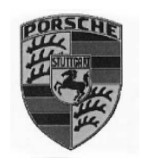
“Porsche logo”
-In the 1950's, Porsche engines were adapted (like Volkswagen) due to their characteristics of being horizontally-opposed cylinders.
-First were those of the 678 model that gave between 50 and 75 CV.
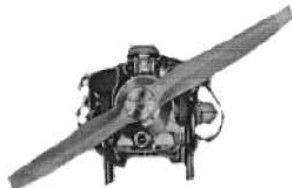
“Porsche 678”
-Dr. Porsche's experience in aircraft engine design dates back to WWI times when he made Austro Daimler in-line cylinder engines.
-The 678/0 gave 65 CV at 4,500 rpm with double ignition and reduction to 0.588.
-The 678/1, the same power, but with reduction to 0.472 and electric starter.
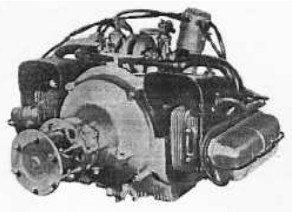
“Porsche 678/3”
-The 678/3, had less power, and gave 52 CV at 3,200 rpm without reduction gear. The basic version had a hand starter and the 678/3A version had an electric starter.
-In fact the power plant of the 678/1 and 678/3 were identical, except for the inclusion of the gearbox in the former one.
-On the /3, the propeller is fitted directly on the crankshaft.
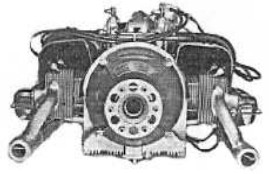
“Porsche 678/3, another view”
-The 678/4 is similar to the 678/1 as we have said, with a standard reducer of 1.98: 1 and optional are the following ratios, of 1.46: 1, 1.7: 1 and 2.112: 1.
-The /4 gave 70 CV at 4,600 rpm of the crankshaft.

“Porsche 678/4”
-In recent times it has concentrated its aeronautical efforts on a special engine model, the PFM-3200, derived from the 911-S car.
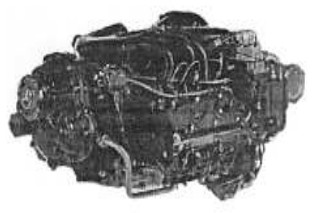
“PFM-3200”
-It was a 4-stroke, forced-air-cooled engine with six horizontally-opposed cylinders, and K-Jetronic electronic fuel injection.

“Porsche PFM-3200”
-The maximum power is 240 CV at 5,300 rpm.
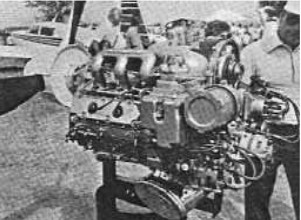
“PFM-3200”
-There were variants such as the basic N01, the N00 with reduced power and low compression for MOGAS.
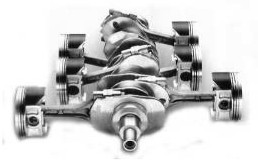
"Precious connecting-rod set of the PFM"
-The N03 had more power and compression for AVGAS. The T03 was a turbocharged, low compression N03.
-This very attractive project could not compete with the price/quality ratio of the current Continental and Lycoming engines. Finally in 1988 the program was canceled.
-A parenthesis: From the days of WWII there was a project that came out recently in the light of a Porsche turbojet called TL-300.
-It was projected for short life and destined to a marine V-1 version to attack vessels, as we can see in an original sketch of the time. It was the 109-005.
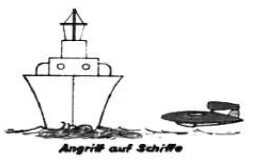
“V-1 with TL-300”
-This turbine that had to replace the Argus 109-014 pulse jet was an expendable turbojet, the Porsche 109-005 (official name).
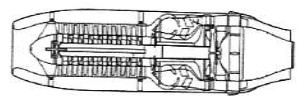
“TL-300”
-It is strange that the compressor section is the same at the inlet and outlet.
-Among the advantages would be not needing a launch catapult. The nominal thrust was 500 kgf (1,102 lbf.).

“TL-300 cowling”
-The turbojet design was from Porsche and its team, but shortly before the end of the war it was handed over to Dr. Max A. Mueller (who took part in Junkers and Heinkel).
-Porsche's previous experience with turbines had been design and development of turbine engines to power some Leopard and Tiger tanks.
-Going back to the PFM-3200, we add that the appearance of the Porsche PFM 3200 exhibited at the Munich Museum is very beautiful.
-It was built around 1984 at the Ferdinand Porsche AG factory in Stuttgart-Zuffenhause.
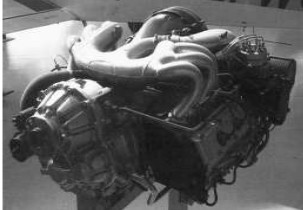
"PFM-3200, at the Munich Museum"
-It began its development around 1981 based on the Porsche 911 car engine, a 6-cylinder boxer.
-Only 80 engines were installed due to their cost and because the evolution of the market was in recession due to the famous law of product liability that in the USA was wreaking havoc with the closure of aircraft manufacturers due to increase in fair plaintiff demands the few and absurd the others.
-In 1990 the PFM-3200 project ceased.
-We are not going to finish the chapter without mentioning that the 702/3 type piston engines from 1963 giving 72 CV at 4,500 rpm have also been prepared to fly.
-And that "homebuilders" have also used Porsche engines for their devices, such as the Type 369 of 1100 cc that gave 35 CV.
-The 527, 528 and 546 of 1500 cc and 50 CV were used until 1970.
-Later the 616 engine with 1600 cc giving 65 CV was seen in 1975, as well as the Type 587 Carrera 2 with 2000 cc delivering 82 CV in 1980.
From Appendix 6: Ferdinand Porsche was the early Austro-Daimler engine designer.
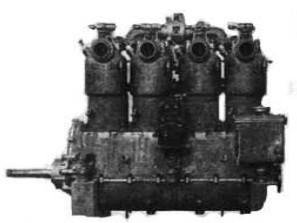
“Austro Daimler, by Porsche in 1910
-The 6-cylinder engines, from 180 to 360 CV are those that made the brand famous during the First World War.
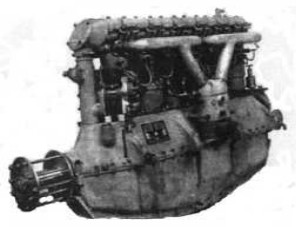
"Austro-Daimler 6-cylinder from 1917"
-At the end of WWI, Porsche patented the RBI engine, a W9 with three rows of three cylinders at 40°.
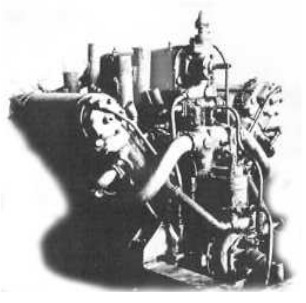
“Porsche RBI, type W9”
-More information is given in the book "Flugmotoren 1910-1918" by J.A. Gilles, 1971.
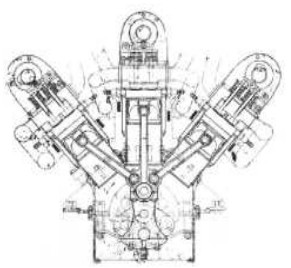
“RBI, type W9, cross-section”
-The design of these engines contrast with the compact and modern PFM-3200 of the last years of the 20th century. See main text.
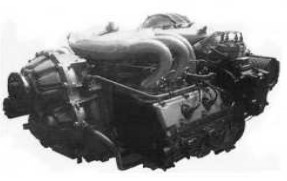
"The modern aeronautical Porsche"
-Porsche's small 678 engine and the larger PFM-3200 have clearly been airlifted. Other models have been considered.
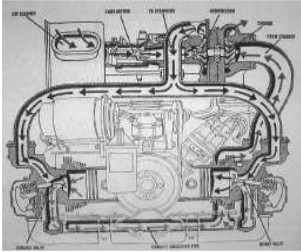
“Air-cooled and turbocharged Porsche”

“Cessna with Porsche PFM-3200 engine”
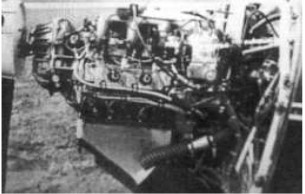
“Porsche engine on Cessna”
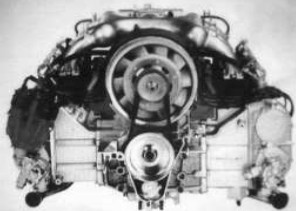
“Air cooled without turbo”
From Appendix 10: Below we show a Porsche 911 car engine that is heavily modified with turbocharger and intercooler, with a beautiful appearance.
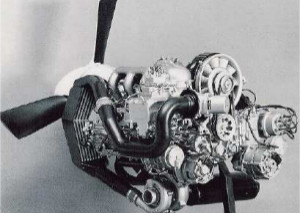
"Aero engine based on Porsche 911"
From Appendix 12: We know of the V1 project with the Porsche 109-005 turbojet, considered low cost, expendable, and disposable.
-Now we have received a project, similar to the previous one, but with a more detailed drawing. Fieseler Reichenberg made it and it was known as the R-IV project with a Porsche P109-005 turbine.

“Reichenberg IV”
-We observed a cockpit and in the bow a battery of rockets in the style of the Bachem Natter, it was even thought of using it for suicide missions. Therefore it would be a low cost interceptor for allied invasions. But with a turbine instead of the rocket engines of the Natter or pulsejet of the V-1.

"The TL-300, officially named 109-005"
-This Porsche project did not materialize. All the works and documentation were passed on to Dt-Ing Müeller, architect of the BMW 003 and Junkers Jumo 004 almost at the end of the war.
-The author observes that the compressor section is constant throughout, which identifies it rather as a fan. Axial compressors continually decrease the area of the section to increase the pressure.
(Project R4 is the Fieseler F-103 A-1 R4, powered by an Argus 109-014 pulse jet).
-And now finally, a curious assembly of two Porsche engines coupled with gearbox and clutches.
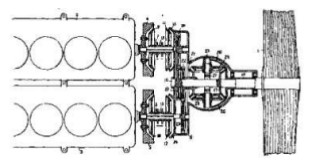
"Curious project for the assembly of two engines"
Engines of PORSCHE
Model: 109-005
Arquitecture:
Compressor/s:
Combustion chambers:
Turbines:
Power / Thrust: / ---
Weight:

"The TL-300, officially named 109-005"
Model: 678
Arquitecture:
Cooling:
Total Displacement:
Bore / Stroke: x
Power:
Weight:

"Porsche 678/3"
Model: 702
Arquitecture:
Cooling:
Total Displacement:
Bore / Stroke: x
Power:
Weight:
Model: PFM-3200
Arquitecture:
Cooling:
Total Displacement:
Bore / Stroke: x
Power:
Weight:

"PFM-3200, at the Munich Museum"
Model: Porsche (Austro-Daimler, 1910) 4 cyl.
Arquitecture:
Cooling:
Total Displacement:
Bore / Stroke: x
Power:
Weight:

"Austro Daimler, by Porsche in 1910"
Model: Porsche (Austro-Daimler, 1917) 6 cyl.
Arquitecture: 6-cylinder In-line
Cooling:
Total Displacement:
Bore / Stroke:
Power:
Weight:

"Austro-Daimler, 6-cylinder 1917"
Model: RBI, W9
Arquitecture:
Cooling:
Total Displacement:
Bore / Stroke: x
Power:
Weight:

"Porsche RBI, type W9"


